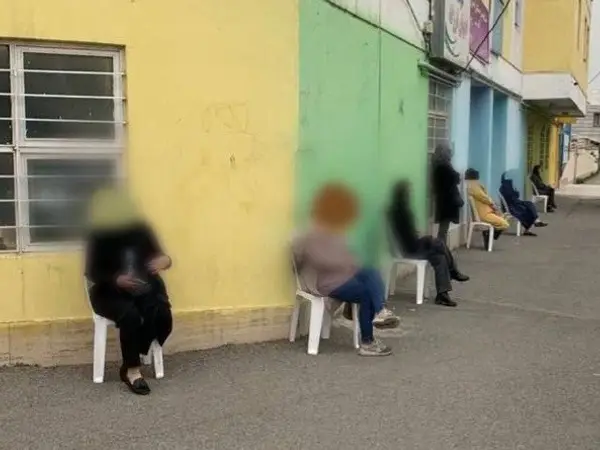As the government in Iran fails to stop recurring chemical attacks on girls’ schools, parents are moving to take protection into their own hands.
Following increasing attacks in the past two weeks, photos emerged on social media of parents standing guard outside their daughters’ schools.
Moreover, the Coordination Council of Iranian Teachers' Trade Associations issued a statement on Monday, stressing the necessity of forming grassroot groups to protect students. The council also called for the formation of a "human chain around schools.”
Earlier on Monday, several schools in the Kurdish-majority city of Sanandaj were attacked by the mysterious gas for the second time in the past two weeks.
Also on Monday, schools were attacked in the cities of Hamedan, Mehrshahr and Karaj, among others. An unknown number of girls were taken to hospital following these attacks.
The council also said that two teachers were also hospitalized in the intensive care unit after one of the attacks in Karaj, near the capital Tehran.
In the statement, the Council pointed out that the poisonings have been happening for over six months and despite haphazard denunciations authorities have taken no action to stop them.
"While we are witnessing the continuation of these crimes, the suspicion of the government's support and orchestration of the attacks have become evident,” read the statement.
“The country's police force is unable to ensure the safety of the children, but at the same time, it has devoted its efforts to threatening freedom-loving women, who resist pressure so as to have a choice on choosing their clothing," the council added.
Urging students, their families, and teachers to join hands and set up groups to protect the schoolgirls, the council said, If the perpetrators of these catastrophic crimes are not identified, tried and punished, the teachers will inevitably hold classes in the street to save the lives of the students and will ask the popular groups to protect them with a human chain."
In the past few days, families of students staged several rounds of protest rallies urging officials to hold classes virtually rather than at schools to protect children from further attacks that began in November.
Critics of the regime say the attacks are part of a crackdown on protests, a claim denied by officials who have claimed the symptoms are the result of mass hysteria. Every now and then in the past six months, state media reported the arrest of perpetrators but never has the regime announced the identities of the detainees, or provided information about their motives, date of trial and the investigation.
The only people whose arrests became certain were the people who released videos of the aftermath of the attacks. The Ministry of Islamic Guidance has sent a notice to the local media to censor the news related to the attacks.
Close to 300 schools were targeted in the past Iranian year ending on March 20 without any apparent serious effort by the government to identify and pursue the perpetrators, nor to explain to terrified parents and students what was happening.
Thousands of students have been affected, mostly girls, with hundreds hospitalized with symptoms including respiratory distress, numbness in their limbs, heart palpitations, headaches, nausea, and vomiting.
